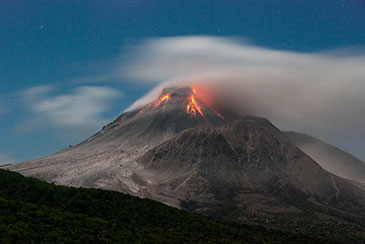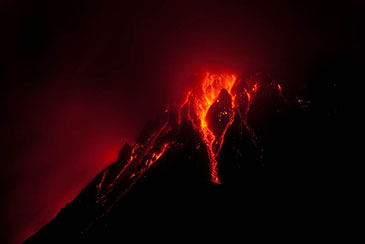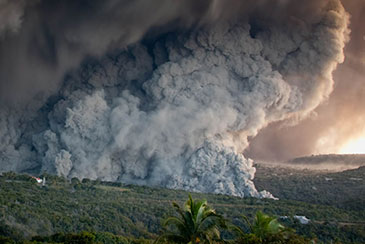The Eruption of the Soufrière Hills Volcano, Montserrat from 2000 to 2010, edited by G. Wadge, R.E.A. Robertson and B. Voight, comprises 27 substantial chapters that review the development and application of scientific study at the Soufrière Hills Volcano. It follows from an earlier memoir, published in 2002, and represents the most complete collection and description of this extraordinary eruption and the breadth of scientific investigation it has facilitated.
In the mid-1990s, the small island of Montserrat in the Caribbean made international news when the Soufrière Hills Volcano began erupting after about 400 years of inactivity. The ensuing eruption has caused devastation on the island – almost all of the population were displaced and the capital city, Plymouth, has subsequently been destroyed and partly buried by volcanic ash. Unlike many eruptions of its type, the Soufrière Hills eruption has been long-lived, continuing to erupt on and off since 1995.
When the volcano first showed signs of unrest, scientists from all over the world scrambled to make measurements and observations. There has been particularly strong involvement from UK scientists, owing to Montserrat’s status as a UK Overseas Territory. With its unique setting and unusual longevity, the Montserrat eruption has become one of the most important and best-studied eruptions of its type, and has spurned a substantive contribution to volcanological science.
Scientists at the University of Bristol have been central to research on Montserrat, on topics ranging from the physics and chemistry of volcanism to developing monitoring and analysis techniques.
In particular, Professor Willy Aspinall and Professor Steve Sparks pioneered the application of operational quantitative risk assessment for volcanic hazards at Montserrat. The models, which are still used in Montserrat, represent the longest-running and most sophisticated volcanic risk assessment of their kind.
Dr Henry Odbert, a research associate in the School of Earth Sciences and former scientist at the Montserrat Volcano Observatory, has authored several chapters in the memoir, including a review and analysis of cyclic eruptive behaviour – one of the notable characteristics of the Montserrat eruption.
His chapter on geodetic observation on Montserrat, with contributions from Dr Jo Gottsmann and Dr Stefanie Hautmann, presents a comprehensive review of how geophysical study enables us to better understand the deep physical processes of volcanic eruptions. Dr Hautmann leads a chapter describing investigation of the volcanic system using gravity data.
The eruption on Montserrat has enabled scientific study that has yielded substantive contributions to our understanding of how volcanic eruptions work, how we can best monitor and interpret volcanic behaviour, and how to assess and manage the risks posed by volcanic hazards.
Dr Odbert said: "This collection, with significant contribution from researchers at the University of Bristol, presents an overview of the science associated with the eruption on Montserrat, particularly between 2000 and 2010 – the last time the volcano erupted fresh lava. At the time of writing, the volcano continues to indicate that future eruptions are still possible. A major scientific challenge now is to apply our knowledge and understanding of this fascinating volcano to forecast how the eruption may evolve hereafter."
The Bristol staff who contributed to the volume are: Professor Steve Sparks, Professor Willy Aspinall, Dr Henry Odbert, Professor Oleg Melnik, Dr Jo Gottsmann, Dr Stefanie Hautmann and Dr Catherine Annen.


